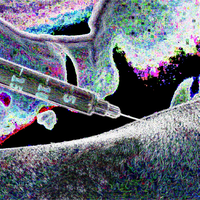| BDO | |
|---|---|
| Esters [] | |
|---|---|
| 1,4-Butanediol dipropionate | |
| Molecular structure via molpic based on CDK |
| Physical properties [] | |
|---|---|
| Molecular mass | 90.12 g/mol [1] |
| Density | 1.017 at 68 °F (USCG, 1999) - Denser than water; will sink g/cm3 [1] |
| Appearance | Colorless, oily liquid [1] |
| Odor | Almost odorless [1] |
| Melting point | 61 ° [1] |
| Boiling point | 446 ° [1] |
| Decomposition | When heated to decomposition it emits acrid smoke and fumes. [1] |
| Solubility | greater than or equal to 100 mg/mL at 73 °F (NTP, 1992) [1] |
| Predicted LogP | -0.8 [1] |
| Structural Identifiers [] | |
|---|---|
| Molecular formula | C4H10O2 [1] |
| IUPAC name | butane-1,4-diol [1] |
| SMILES | C(CCO)CO [1] |
| InChI | InChI=1S/C4H10O2/c5-3-1-2-4-6/h5-6H,1-4H2 [1] |
| InChIKey | WERYXYBDKMZEQL-UHFFFAOYSA-N [1] |
1,4-Butanediol
1,4-Butanediol (also known as Butane-1,4-diol, Tetramethylene glycol, 1,4-Butylene glycol, 1,4-Dihydroxybutane, 1,4-Tetramethylene glycol, Tetramethylene 1,4-diol, Sucol B, DIOL 14B, 1,4-BD or Agrisynth B1D) is a
Chemistry
Esters []
1,4-Butanediol is typically found in the form of its dipropionate ester.
Stereochemistry []
1,4-Butanediol is a achiral mixture
| Anodyne Usernotes [] | |
|---|---|
| href=/user/magnus>magnus / 1,4-Butanediol via Oral |
|
Experience reports []
There are currently 25+ experience reports involving 1,4-butanediol on OpenErowid:
- "Intense Pain in My Abdomen"
- "1,4-B Is Not a Toy"
- "Extremely Addictive"
- "Not All People Experience Addiction"
- "Extremely Dangerous"
- "SUPER Danger"
- "Terrible Anxiety and Depression Till This Day"
- "Good and a Little Too Intense"
- "Daily Usage Resulting in Muscle Injury"
- "A Wife's Point of View"
- "Toxicity After Infrequent Use"
- "For Growth Hormone"
- "During Withdrawal Wishing I Was Dead!"
- "Not Addictive, My Big Ol' Butt"
- "Near Death Experience"
- "Tips for Withdrawing"
- "Withdrawal Symptoms"
- "A $6,000 Bill"
- "1,4-Butanediol Toxicity?"
- "Life Force"
- "A Multifaceted Substance"
- "Pharmacological Error"
- "Addictive? Yes and No"
- "$25k and Near Fatal Outcome"
- "Definitely addictive!"
External links []
References []
National Center for Biotechnology Information. PubChem Compound Summary for CID 8064, 1,4-Butanediol. Accessed June 26, 2025. https://pubchem.ncbi.nlm.nih.gov/compound/8064
U.S. Food and Drug Administration; National Center for Advancing Translational Sciences. 1,4-Butanediol. UNII: 7XOO2LE6G3. Global Substance Registration System. Accessed June 26, 2025. https://gsrs.ncats.nih.gov/ginas/app/beta/substances/7XOO2LE6G3
 Anodyne
Anodyne